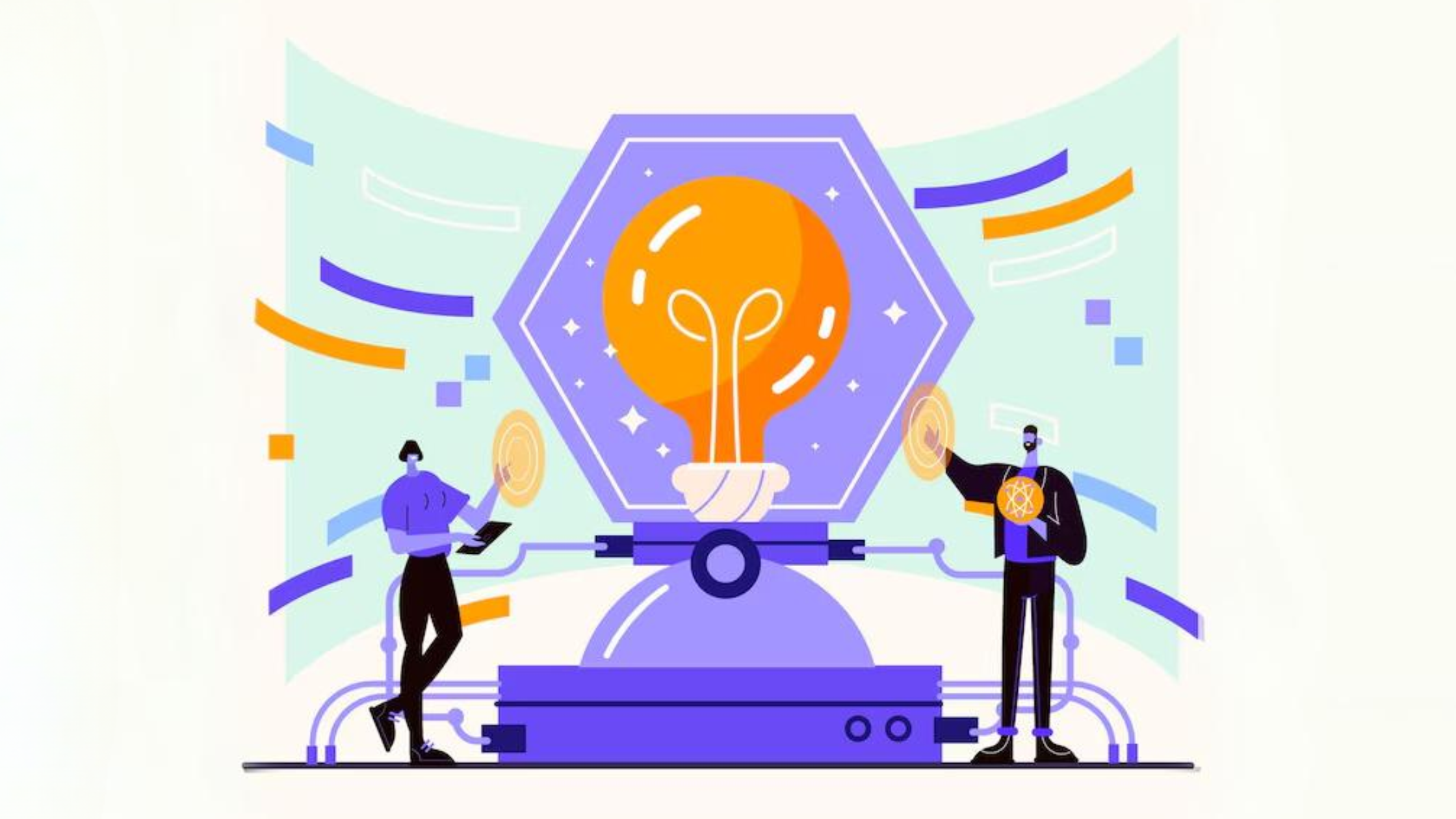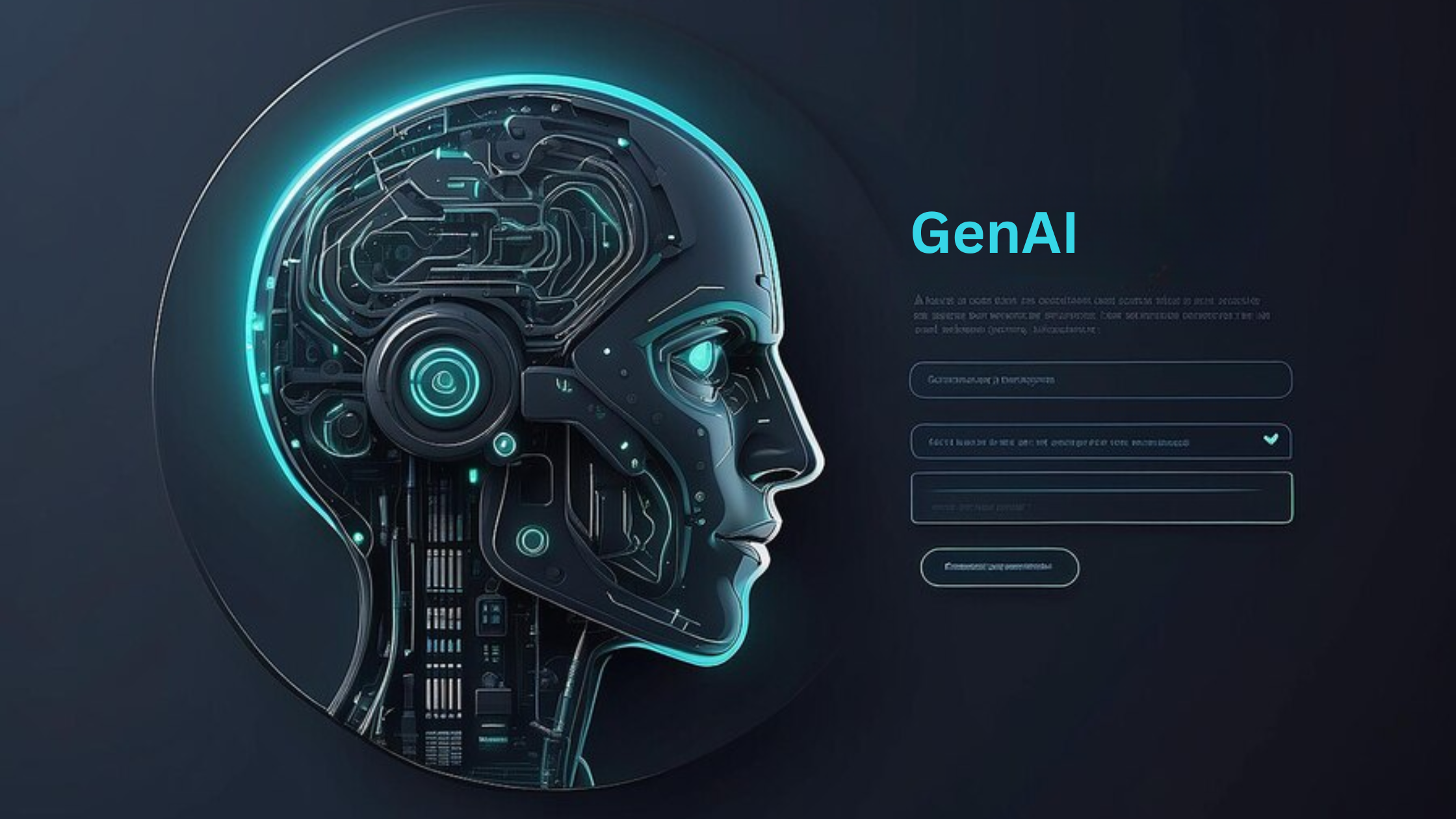MODIFIED ON: September 23, 2024 / ALIGNMINDS TECHNOLOGIES / 0 COMMENTS

The advent of Generative AI (GenAI) has marked a significant shift from science fiction to our everyday reality. As it becomes an integral part of our technological scene, GenAI is revolutionizing industries and reshaping how we work.
In this blog, we’ll explore GenAI’s transformative power, and its capabilities to boost productivity and provide a strategic roadmap to unlock its full potential.
The Transformative Power of GenAI
GenAI is more than just a tool – it catalyses creativity, efficiency, and informed decision-making. Here’s a glimpse into its game-changing potential:
Amplified Creativity: GenAI enhances human creativity rather than replaces it. Imagine a design team collaborating with an AI assistant that suggests novel ideas, patterns, and colour combinations, leading to accelerated innovation.
[Insert visual representation of how GenAI stimulates creative processes]
Data Analysis and Insights: GenAI rapidly processes massive datasets, uncovering valuable insights that would take humans weeks to discover. From identifying customer behaviour trends to optimizing supply chains, GenAI unlocks hidden value.
Effortless Content Generation: Imagine a marketing team that can easily generate personalized product descriptions, social media posts, and customer service responses. This not only boosts productivity but also frees up human brainpower for more strategic and creative pursuits.
Widespread Adoption of AI Tools
The adoption of AI tools, including GenAI, has exploded across industries. According to data, roughly 42% of enterprise-scale companies (with more than 1,000 employees) report actively deploying AI in their business. It’s clear: GenAI isn’t just a buzzword—it’s a business imperative.
Key Points Driving Adoption:
Organizational Decentralization: AI tools like GenAI are increasingly adopted across organizations without formal mandates. Data scientists and developers are already exploring open-source libraries, experimenting with pre-trained models, and building solutions tailored to specific business needs. This organic, decentralized adoption fosters grassroots innovation but comes with challenges like inefficiencies or lack of governance.

Innovation vs. Governance: While decentralized AI adoption boosts creativity, organizations must strike a balance. Without proper governance, redundancy, inefficiency, and conflicting approaches are risky. Governance structures should ensure alignment with organizational goals while maintaining agility.
Ethical Considerations: GenAI’s power comes with responsibility. AI models can inherit biases from training data, leading to unintended consequences. Building oversight mechanisms that promote fairness, transparency, and accountability is critical.
Developing A Roadmap for Implementing Generative AI (GenAI)
Developing a roadmap for implementing Generative AI (GenAI) is a strategic task involving technical planning, resource allocation, and change management.

Here’s A Step-By-Step Guide to Building a Clear, Actionable Roadmap for GenAI Implementation:
1. Define the Purpose
Why do you want GenAI? – This is the first and most critical question. Whether you automate customer service, generate content, or build sophisticated prediction models, the objective must be clearly defined.
Use Case Identification – Narrow down specific use cases where GenAI can make a difference (e.g., marketing content generation, automating reports, AI chatbots, etc.). Expected Outcomes – Set clear KPIs for success like improved productivity, cost reductions, or customer satisfaction.
2. Assess the Current Technology Stack
Inventory of Resources – What hardware, data, and tools do you already have in place? AI implementation often requires large datasets, robust computing power, and sometimes integration with existing systems (e.g., CRM or CMS).
Cloud vs. On-Premise – Decide where your GenAI infrastructure will live. A cloud-based solution (e.g., AWS, Azure) provides scalability and flexibility for most. However, some organizations may opt for on-premise setups due to security and compliance needs.
3. Build a Cross-Functional Team
AI Experts—To develop the models, you’ll need AI engineers, data scientists, and NLP specialists. If internal resources are limited, outsourcing might be necessary.
Business Stakeholders—To ensure the AI solves real business problems, Include decision-makers from various departments (like marketing, sales, and HR).
Change Management Team – AI can fundamentally alter workflows, so a team responsible for change management should be in place to guide and train employees.
4. Data Strategy
Data Collection and Cleansing – Data is the fuel for any AI. Review your data quality, sources, and volume. Are there gaps that need to be filled?
Data Privacy and Compliance – Ensure your GenAI system complies with privacy regulations (like GDPR) and has mechanisms for secure data handling.
Data Annotation – Some GenAI models, especially supervised ones, need labelled data. Plan for the process of annotating data or consider outsourcing it.
5. Select or Build the GenAI Model
Pre-trained vs. Custom Models – Decide whether off-the-shelf models (like OpenAI’s GPT or Google’s BERT) can meet your needs or if you need to develop custom models tailored to specific tasks.
Infrastructure – Make decisions about model training and inference. Do you need GPUs for training? Will you use containers like Kubernetes to scale?
Iterative Development – Develop the model in stages, starting small and scaling based on success metrics.
6. Integration into Business Processes
Pilot Testing – Before a full-scale rollout, run pilot projects to validate GenAI’s efficacy in a controlled environment. This helps identify any flaws early on.
Seamless Workflow Integration – Make sure the AI integrates smoothly with existing processes and tools (e.g., automating responses through the customer service portal).
User Feedback Loop – Engage end-users to provide feedback on how the AI impacts their workflows and collect data for refining the model.
7. Risk Management & Ethics
Bias and Fairness – Ensure the GenAI is free from unintended biases that can lead to discriminatory outcomes.
Model Explainability – Build in transparency so users understand how decisions are being made by the AI.
Cybersecurity – GenAI systems should be robust against attacks, especially since they may work with sensitive data.
8. Training and Change Management
Employee Training – Employees will need training not only on how to use GenAI tools but also on how to interpret and interact with AI-generated results.
Cultural Shift – AI implementation can sometimes be met with resistance. Prepare the workforce for changes in their roles and responsibilities.
9. Monitor and Iterate
Performance Monitoring – Once GenAI is deployed, set up metrics and dashboards to monitor performance continuously.
Model Maintenance – AI models degrade over time as they’re exposed to new data. Regular retraining, updating, and fine-tuning will be needed to ensure ongoing accuracy.
Feedback Loops – Keep a continuous feedback loop with end-users to refine the model’s functionality.
10. Scale and Optimize
Expand Use Cases – Once the initial implementation is proven successful, explore new areas for applying GenAI within your organization.
Cost-Benefit Analysis – Regularly evaluate the ROI and fine-tune for cost-efficiency, whether it’s through resource optimization or better hardware utilization.
Agility and Strategy: The Perfect Pair for GenAI Success

As organizations grapple with the enormous potential of GenAI, agility and strategic thinking become critical. Following an agile approach to AI implementation ensures that businesses can pivot, iterate, and refine their models as the technology evolves. Here are some agile principles to consider:
Start with People: Understand your users’ needs. GenAI should enhance human capabilities, not replace them. Invest in building a workforce that’s skilled in both AI and domain-specific knowledge. The future isn’t just about technology; it’s about how humans and AI collaborate.
Iterate and Refine: GenAI models evolve quickly, so agility is key. Break development into short iterations and refine continuously based on real-world testing.
Stay Responsible: Address ethical concerns and ensure your AI operates within a framework of fairness, accountability, and transparency. Remember, GenAI should serve your business and align with societal values.
Invest in Scalable Tech: Infrastructure matters. Invest in secure, scalable systems that can support GenAI’s evolving needs.
In conclusion, GenAI isn’t just another technological advancement—it’s a game-changer that redefines how we think, create, and innovate.
Experience GenAI’s full potential with AlignMinds!
Want to harness the power of Generative AI (GenAI) without the ethical hangover? Adopt this strategic roadmap and agile approach with experts from AlignMinds!
We understand the incredible potential of GenAI, but also the potential pitfalls. Here’s how they can help you unlock the good stuff, worry-free:
No More Bias Blues: We help you build ethical guidelines to keep your AI fair and transparent. No hidden agendas, just results you can trust.
Regulation Navigation: Confused by the alphabet soup of AI regulations (EU’s AI Act) AlignMinds will be your compass, ensuring you are compliant and building trust from the get-go.
Risk Mitigation: Worried about security vulnerabilities or unintended consequences? AlignMinds will equip you with the tools to manage those risks, so your AI works for you, not against you.
Building Consensus Bridge: We believe in open dialogue, involving everyone in the conversation. This builds trust and ensures everyone’s on the same page when it comes to AI use.
Basically, AlignMinds is your one-stop shop for responsible GenAI development. So, ditch the ethical headaches and unleash the power of AI with confidence!
With us, your organization can harness GenAI’s full potential to not only boost efficiency but also transform the way you operate.
At AlignMinds, we specialize in helping businesses like yours navigate this shift seamlessly. Ready to unlock the future with GenAI? Let’s partner up and drive innovation together. Get in touch with us today to start your GenAI journey!
Leave a reply
Your email address will not be published.
-
Recent Posts
- The Role of AI in Business Growth: Top Trends for 2025 and Beyond
- The Evolution of Voice Search in AI: What’s Next for 2025?
- How to Hire an AI Developer: A Complete Guide 2025
- Top 10 Android App Development Trends in 2025
- Top Trends in Product Modernization for 2025 and Beyond
-
Categories
- MVP Development (5)
- AlignMinds (56)
- Operating Systems (1)
- Android POS (3)
- Application Hosting (1)
- Artificial Intelligence (49)
- Big Data (2)
- Blockchain (1)
- Cloud Application Development (8)
- Software Development (39)
- Software Testing (9)
- Strategy & User Experience Design (4)
- Web Application Development (28)
- Cyber Security (6)
- Outsourcing (7)
- Programming Languages (3)
- DevOps (5)
- Software Designing (6)
- How to Code (4)
- Internet of Things (1)
- Machine Learning (2)
- Mobile App Marketing (5)
- Mobile Application Development (25)
- Mobile Applications (11)







